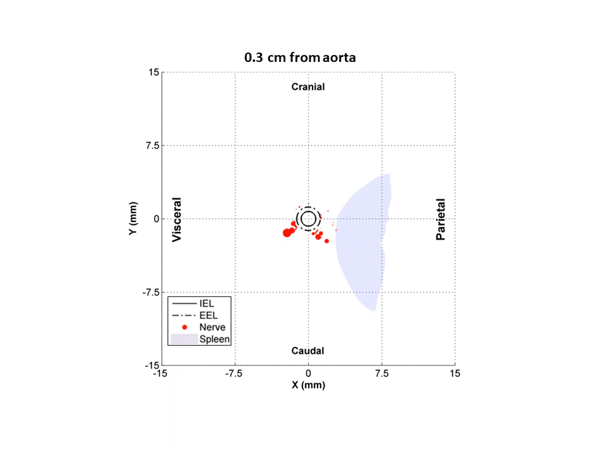Mazen Albaghdadi, Fernando Garcia-Polite, Brett Zani, John Keating, Raffaele Melidone, Anna Spognardi, Peter Markham, Abraham Tzafriri. “Splenic artery denervation: target micro-anatomy, feasibility, and early preclinical experience.”
Summary: This study sought to evaluate perisplenic artery nerve distribution and the feasibility of splenic artery denervation (SDN). The NEXION radiofrequency catheter was used to perform SDN in healthy and inflammatory arthritis pigs. Splenic artery anatomy, nerve distribution, and splenic norepinephrine (NEPI) levels were evaluated before and after SDN. Perisplenic artery nerves were primarily distributed within 2.5 mm of the arterial lumen and were largely sympathetic on the basis of tyrosine hydroxylase expression. The pancreas, tended to be circumferentially positioned around the proximal splenic artery, typically >2.5 mm from the lumen, ensuring that most of the nerves could be targeted without affecting this sensitive organ. The mid segment of the splenic artery was relatively free of contact with the adjacent pancreas. Splenic NEPI levels and nerve abundance followed a decreasing gradient from the proximal to distal splenic artery. SDN resulted in significant reductions in splenic NEPI levels at day 14 (60.7%, P = 0.024) in naïve pigs and day 45 (100%, P = 0.001) in inflammatory arthritis pigs. There was no significant effect of SDN on joint soft tissue injury or circulating inflammatory markers in the inflammatory arthritis model. The majority of perisplenic arterial nerves are within close proximity of the lumen and are primarily sympathetic efferent fibers. Nerves in the mid-segment may be the preferred SDN target given their proximity to the artery and paucity of periarterial off-target organs. SDN appears safe and effective at reducing splenic NEPI levels.

Translational Research. doi:10.1016/j.trsl.2019.07.012.

